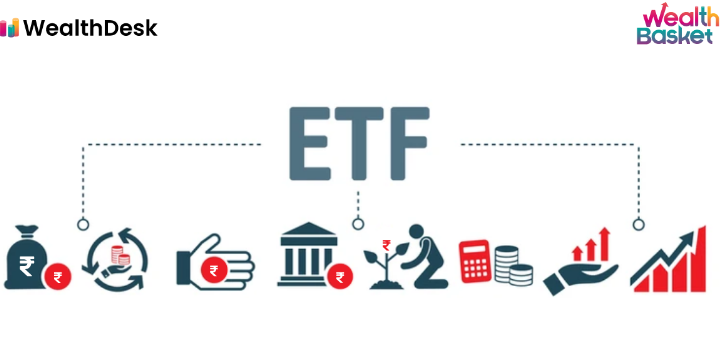NEWS
Know How Manufacturing ETFs Can Shield Your Portfolio From Economic Uncertainty

An uncertain economy can levy great risks on different investments. Even seasoned investors must be updated with current stats and be able to estimate future possibilities to avoid or restrict loss. Whenever the matter of balancing the risk factors comes into discussion, looking for the safest investments can be the first answer that comes to mind. However, risk and return often run in the opposite direction in the investment market, where one is often required to stomach risk to get comparatively higher returns.
Another and more popular approach to balancing risk is portfolio diversification, and this is where an investment like a manufacturing ETF enters. A basic definition of ETFs can explain how they use the strategy of investing in diverse securities like mutual funds. But why the emphasis on manufacturing ETF? Read on to find the answer!
Manufacturing ETFs vs. Economic Uncertainty
Economic uncertainty can be of different types. Let’s take the recent projections of the US recession as an example. On August 15, 2024, J.P. Morgan indicated a 35% possibility of a US and global recession to begin before the end of 2024. The odds can rise to 45% by the end of 2025. A recession can result in falling interest rates, reducing stock prices, reducing yields, and so on. Safe to say that some sectors are more influenced by the market turmoil than others.
A manufacturing ETF can protect your investment against such economic uncertainty, and here’s how!
Portfolio Diversification
When you have a diverse portfolio, meaning your investments are divided into different securities across different sectors, you have better chances to mitigate or balance the risk factors. This way, the poor performance of one particular investment can be managed by another well-performing investment. This also allows you to reach for some of the options generating the highest returns as you have space to fall back.
Asset Diversification
The same formula applies to the selection of assets. Investments in a broad range of assets are likely to show better results than investments made in a similar line of assets when some uncertainty hits the market. If any asset becomes risky, the overall portfolio can still be managed.
Market Capitalization Diversification
Some ETFs track companies of different capitalization sizes. For example, there are small-cap, mid-cap, and large-cap companies. These companies of various sizes can respond differently to market turmoils. Suppose the manufacturing ETF you have chosen is invested in both large and small-cap companies. If the turmoil has impacted the performance of the large-cap company in a negative way, the small-cap company can balance the loss and vice versa.
Key To Ensure Investment Protection: The Correct Industrial Sector Diversification
ETFs, whether they are focused on manufacturing companies or not, offer similar diversification opportunities. That said, when you are picking a manufacturing ETF, the following strategies can give you a better hand!
Investing in Consumer-Staple ETFs
Companies that manufacture everyday essentials, like food, beverages, and household items, are great picks. Regardless of the world economy, the demand for these essentials is going to persist. So, if you are invested in such companies, your capital will continue to grow.
If the manufacturing cost rises, i.e., if the costs of raw materials, labor, and so on increase, the companies can pass that to the consumers by increasing the product prices. This way, the company can maintain a solid profit margin, creating a hedge against inflation, and investors’ interest stays secured.
Investing in Healthcare ETFs
The requirements for healthcare products are never-ending, almost like daily essentials. The recent pandemic showed us the same. So, companies that manufacture healthcare products are shielded against economic uncertainties, and healthcare manufacturing ETFs are also protected.
Investing in Quality ETFs
Quality ETFs refer to investing in companies that have robust fundamental characteristics, like healthy balance sheets, consistent growth, and exciting growth prospects. These companies are better at scoping and managing economic upsets than other companies. ETFs, which have securities of such companies in their baskets, can have a more stable investment experience compared to other investors.
Wrapping Up!
Concludingly, the operation reshoring of manufacturing companies initiative in the USA has brought manufacturing ETF investments under the spotlight. In general, ETFs have several benefits that give them a significant position between mutual funds and stocks. The manufacturing ETF section brings a bigger bucket of advantages for investors. The rapidly growing infrastructure development, technical advancement, digitalization, and so on have expanded the scope of manufacturing ETF investments. Their ability to provide certain relief to investors during economic uncertainties definitely adds to their popularity.
It is important to analyze the risk factors, or better still connect with professionals, choose the accurate sectors, and go for a smart diversification of assets to make the most out of your manufacturing ETF investment.










